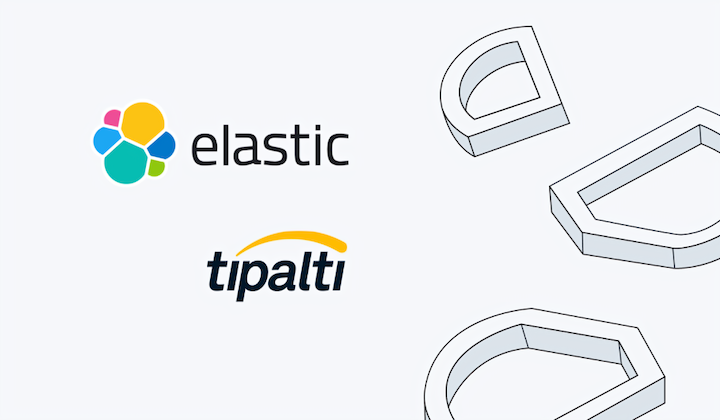How Tipalti mastered Elasticsearch performance with AutoOps
From manual monitoring to proactive optimization, learn how Tipalti used AutoOps to save 10% annual costs.

For a global payables automation leader like Tipalti, where financial transactions are the lifeblood of the business, infrastructure performance isn't just a technical goal; it's a core business requirement. Managing a complex ecosystem of databases, including Postgres, SQL Server, MongoDB, Kafka, and Elasticsearch, with a lean team of four engineers demands efficiency and powerful tooling.
We recently sat down with Oz Levy, a data operations manager of Tipalti’s technical staff, to discuss their journey with Elasticsearch and how they transitioned from a time-consuming, manual monitoring process to a proactive, automated one with AutoOps in order to achieve a remarkable 10% annual cost saving.
The turning point: Hiring a tool to do the "job"
Tipalti needed a solution that could do a specific "job" — demystify Elasticsearch performance and give the team back their most valuable resource: time. They found their solution in AutoOps.
The impact was immediate.
"AutoOps is highly intuitive. The moment you open the platform, the overview provides immediate, comprehensive visibility into the state of your deployment."
Beyond the initial clarity, it was the actionable intelligence that proved to be a game changer.
"The recommendations feature is exceptionally powerful. It doesn't just identify a problem; it provides a clear explanation and the exact commands needed to resolve it. This is incredibly efficient and has been a significant time saver for our team," says Levy.
This was a fundamental shift. The team no longer had to hunt for answers; the answers were being delivered to them complete with solutions.
The outcome: Measurable wins in cost, performance, and collaboration
Adopting AutoOps translated directly into tangible benefits across Tipalti.
1. Direct cost reduction and optimization
The most immediate financial win was decommissioning Tipalti’s old infrastructure. "We were able to decommission our legacy monitoring clusters entirely," Levy states. But the savings didn't stop there. With the deep visibility AutoOps provided into Tipalti’s indices and shards, the team identified a major optimization opportunity. They rearchitected their indexing strategy, moving from a costly index-per-customer model to a consolidated primary index with dedicated indices for only their top 10 clients. "By rearchitecting our indexing strategy, we achieved a significant reduction in both CPU and RAM usage, which allowed us to downsize our clusters," Levy explains.
2. Proactive performance management and reliability
AutoOps armed the team with the tools to get ahead of problems. Levy recalls an instance where "AutoOps proactively alerted us that a cluster's disk was nearing capacity, which enabled us to react and increase the disk size before it could cause any service impact."
Furthermore, the machine learning-powered anomaly detection capability has been crucial in reducing alert fatigue. By learning the natural ebbs and flows of the team’s workload, AutoOps avoids firing alerts during expected high-traffic periods. "The machine learning-based alerts are highly effective at eliminating false positives, which ensures our team only focuses on genuine issues," Levy says.
3. Empowering developers and fostering partnership
One of the most significant changes was cultural. Tipalti extended AutoOps access to its development teams, transforming the dynamic between infrastructure and application development.
This move democratized performance data, empowering developers to see the real-time impact of their code and take ownership of their services' efficiency.
For Tipalti, the journey with AutoOps has been one of empowerment. It has enabled a small, highly skilled team to effectively manage a critical, large-scale data platform, shifting their focus from reactive firefighting to proactive, data-driven optimization. They've cut costs, improved reliability, and built a more collaborative and efficient engineering culture.
Through strategic initiatives, the company has achieved a remarkable 10% annual cost saving, demonstrating a strong commitment to financial efficiency. Beyond monetary benefits, these efforts have also led to a significant improvement in system reliability, ensuring more consistent and dependable operations. Furthermore, a crucial outcome has been the cultivation of a more collaborative and efficient engineering culture. This transformation fosters greater teamwork, streamlined workflows, and an environment where innovation can thrive, ultimately leading to enhanced productivity and problem-solving capabilities within the engineering department.
DISCLAIMER: The release and timing of any features or functionality described in this post remain at Elastic's sole discretion. Any features or functionality not currently available may not be delivered on time or at all.
In this blog post, we may have used or referred to third-party generative AI tools, which are owned and operated by their respective owners. Elastic does not have any control over the third-party tools, and we have no responsibility or liability for their content, operation or use, nor for any loss or damage that may arise from your use of such tools. Please exercise caution when using AI tools with personal, sensitive or confidential information. Any data you submit may be used for AI training or other purposes. There is no guarantee that the information you provide will be kept secure or confidential. You should familiarize yourself with the privacy practices and terms of use of any generative AI tools prior to use.
Elastic, Elasticsearch, and associated marks are trademarks, logos, or registered trademarks of Elasticsearch N.V. in the United States and other countries. All other company and product names are trademarks, logos, or registered trademarks of their respective owners.